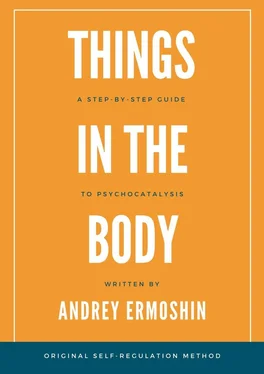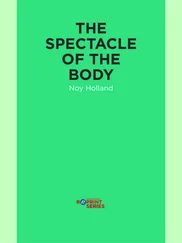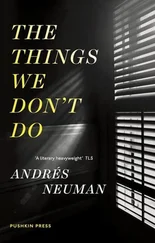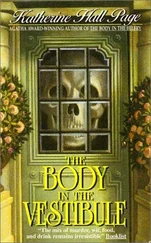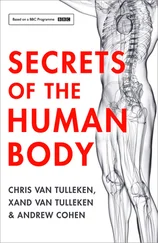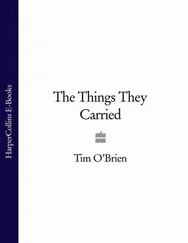Things in The Body
Andrey Ermoshin
Translator Elena Lysenko
Cover design Maria Ermoshina
© Andrey Ermoshin, 2021
ISBN 978-5-0053-5094-7
Created with Ridero smart publishing system
“Have you ever received gifts? “I was asked by one of the neuro-linguistic programming specialists. Apparently, he wanted to “anchor” my state in my process of recollecting the pleasant experiences corresponding to receiving gifts, and then use it for some purpose which was unknown to me. I do not know if that specialist achieved his goals, most likely not, but I am grateful to him. When I conscientiously turned to my experience, I was horrified to find out that I could not remember a single occasion when I received gifts, until I suddenly realized that the main gift is life itself. All the others are simply lost in comparison with it.
Who made this gift for me? I do not know. But I know that my parents, who managed to survive difficult times, are a big part of it. I am grateful to them for their viability and for caring for me. This applies to all my relatives. My positive thinking, or even more broadly, my positive attitude to life is owing to my mother Elena Sergeyevna, who was also my first school teacher, and all my other teachers, among whom I remember with special warmth Galina Alekseyevna Kolobina, Valentina Konstantinovna Tarasova, my History teacher Mikhail Ivanovich Chekalin; my Philosophy teacher at Medical University lion Semyonovich Chernyak, Professor of Psychotherapy Mark Evgenievitch Burno, my internship tutor Vladimir Elizarovich Smirnov, whose clinical thinking is still a model for me; my associates Vyacheslav Nikolaevich Tsapkin and Vera Kerpelevna Loseva, who helped me, a doctor by training, to get closer to the psychological vision of a person; my friend, a “symbolic primitivist’ artist, Vladimir Boldyrev, whose creativity prompted me a number of ideas; all my patients, without the cooperation of whom this book would not appear.
I thank all my colleagues. I especially would like to mention Igor Kanifolsky (St. Petersburg), Alexander F. Bondarenko (Kiev), and Steven Shoen (USA). The experience of their work and behavior were significant for me. Thank you to everyone I have ever met.
Andrey Ermoshin
To the english-speaking readers
«Things in The Body» is the first of a series of books that describe Psychocatalysis. It has been published in several editions in Russian and has already become a kind of classic for a whole generation of specialists. An increasing number of psychotherapists are adopting the ideas of this book: to organize the reverse development of symptoms associated with the experience of problems and injuries, to lead the patients to calmness and regeneration of their state without re-traumatization and without provoking catharsis.
In most of the cases catharsis is not only useless, but also harmful. It gives just temporary relief. It does not solve the basic problems of a person, but, on the contrary, it aggravates them. Nowadays many specialists come to understanding of this fact, whereas, when the first edition of this book was published about 20 years ago, it was not so obvious.
To psychologists and even some naive doctors, the psychodynamic approach, with its working through resistance and unleashing the repressed reactions of the body, seemed attractive, although it is only an imitation of psychotherapy.
Such seduction by seemingly effective work led to many secondary problems of the patients: loss of time, effort, and resources. For some patients and clients that was fatal. They committed suicide or, having passed into the category of psychiatric patients, had miserable life under neuroleptics.
Psychocatalysis, as an alternative approach to working with neurotic patients, goes back to the traditions of the inner practices of Orthodox monasticism and, in part, to the healing traditions of Russian people. It is in this tradition that the hysterization of a patient is not welcome. What is practiced is the «shrinkage of passions’ and «laying off’ the perceived provocations on them, «letting go of fears.»
I hope that the English-speaking readers, whatever culture they belong to, will be interested in correlating their approach with this «Russian’ approach.
Other books on Psychocatalysis: «Phobias, Disappointments and Grief: A Fast Remedy», «Learn Languages Easily: Methods of Self-Regulation for Successful Learning» are also available in English. Other books: «Geometry of Experiences» and «Enigmatic Syndrome: Panic Attacks and Their Treatment" are in the translation process.
I will be glad to get your feedback: erm@list.ru.
Have pleasant and useful reading!
My given body – what to do with it?
It’s so mine and so fit.
Josip Mandelstam
Two patients are talking in a surgical ward in the presence of a third person who has just regained consciousness after an operation: «Our surgeon often leaves things in the bodies of his patients. «He left a glove inside me,» says the first one. «…and I had his hat,» says the second. The newly operated patient looks at them with concern. At that very moment, the surgeon comes in and asks: «Has anyone seen my coat?»
Things in the body… First of all, I would like you to note that we are not talking about things forgotten by the surgeons in the bodies of their patients, but about the objects in the ’body’ of consciousness left there by the people themselves. They are not tampons or scalpels, but anger and resentment, disappointment and sorrow, jealousy and anxiety. Though these ’objects’ cannot be seen with X-rays, their effect on our health is disastrous.
Fuel
We usually speak about feelings, emotional charges, or affections (as psychiatrists call strong feelings, which arise in extreme situations) not as items, but rather as something fluid and striving for expression. Love leads to hugs, disgust – to repel, anger – to kill, and compassion – to heal the wounds of a neighbor. An emotional charge is sort of “fuel’ that drives a particular action.
Is that what nature conceived? When the «action’ is done, a feeling of satisfaction comes. All would be well, if not for situations in which emotions do not find their natural way out.
A person is burned
What happens to a charge when it cannot be released? Such emotions can be left “burning’ for many years if there is no way to send them to their “addressee’ or “to cancel them’. Then a person burns. In some cases, those emotions “burn out’, leaving behind an unpleasant “sediment’.
The «fuel’, which was originally light, thickens to the consistency of gas, gas – to the consistency of liquid, then liquid – to mass, and mass – to stone. Finally, we get a «petrified emotion’. Sometimes the human soul is left holding these «stones’ of mental anguish. As the cause of these emotional charges originate from the outside, we can think of these «stones’ as «foreign objects’, which are difficult to experience, understand, and to convert.
The situations that trigger strong feelings are different, however, both petrified emotions of «our own production’ and these «stones’ or «foreign objects’ that have been taken into the soul from the outside, are capable of disturbing the human condition…
A heavy stone pulls to the bottom
The basic form of loss associated with the carrying of “stones in the bosom’ is a distraction from perception and activity. The feeling of resentment in the chest “depresses’ the hands, the feeling of fear in the stomach influences the legs and all other parts of the body. Attention is taken not only from the parts of the body, but also from the parts of life. A person is “wrapped’.
Читать дальше
